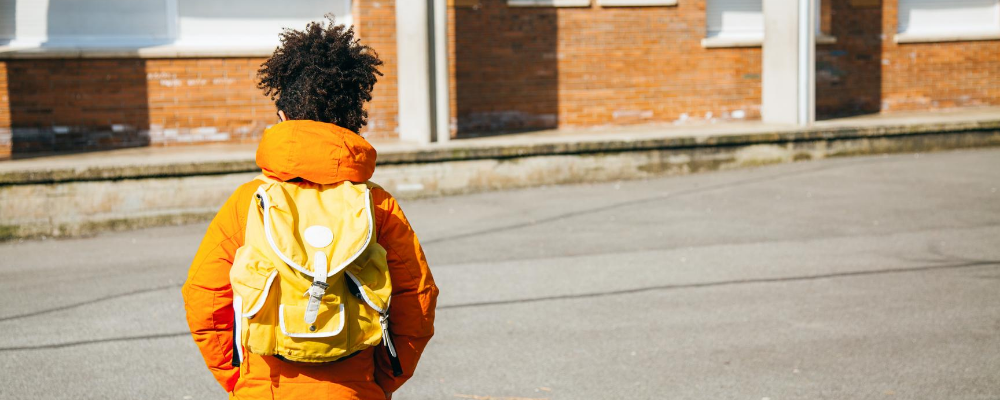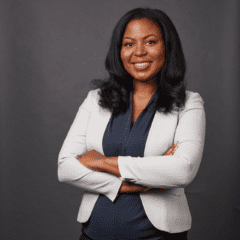By Natalie Wilson, Associate Partner, NewSchools Venture Fund

I have spent the past five years searching for a public school that I am not certain exists.
I am a single mom to a lively, brilliant, rising fifth grader, Gabrielle, who embodies the phrase #BlackGirlMagic. Over the last five years, we’ve moved from Chicago to Philadelphia to Oakland, all while I attended graduate school, completed an education fellowship, and chased after my dream job in education philanthropy. Before each move, I searched for racially diverse, high-performing schools that were serving Black children well. As a data geek, I downloaded performance data on the schools that each district touted as “high-performing.” I noticed that while students were outpacing district performance on average, there were significant gaps between Black students and other students. Gabrielle attended a National Blue Ribbon school in Philadelphia, for example, and the difference between Black and white students scoring proficient or advanced on state exams was over 30 percentage points across all subjects.
City after city, my search disproved my misguided and naive childhood belief that the key to accessing quality educational opportunities was accumulating wealth and living in more affluent neighborhoods where the schools are better resourced.
I recognize that my experience navigating multiple school systems is full of middle-class privilege and the resources, supports, and choices that come with it. And still.
My story is not unique. Black families have been seeking and advocating for high-quality education options for their children for years, with limited progress. My parents were Brooklyn-born first-generation college graduates who chased the American dream and settled in an affluent NJ suburb with the promise of good schools. In those same Blue Ribbon schools where I excelled, Black students were four times as likely to be suspended as white students. They were academically 1.8 grades behind white students on average, despite having higher median household incomes.
In part, these disparities persist because the national education reform narrative often lumps together the experiences of all people of color and focuses heavily on socioeconomic status, even though Black children across various income levels are negatively affected by education systems that were not designed for them to thrive.
Systemic racism manifests itself in lowered expectations, tracking, inadequate support for students experiencing racial stress and trauma, inequitable funding, culturally insensitive curricula, disproportionate discipline, and persistent opportunity and achievement gaps. Black high school students are twice as likely to be suspended as white or Latino high school students. They are disproportionately disciplined for the same behaviors and are more likely to be arrested than other students. Black students are much less likely to graduate from high school and attend college than white students with the same family income. And despite ample research outlining the positive impacts of a same-race teacher on student outcomes, less than 7% of American public school teachers are Black, a number that has fallen over the years.
While these national data are not new nor surprising, it debunks the myth that Black families can earn their way out of racism. I do not want to downplay the impact of poverty on students’ educational outcomes but rather explicitly advocate for a deeper focus on the unique challenges Black children face within schools that cannot and should not be reduced to their socioeconomic status.
What would happen if we evaluated schools only by how their Black students were doing? If those evaluations informed funding allocation and accountability decisions? What if we stopped lumping the experiences of all students of color and using their socioeconomic status or circumstances to explain away their experiences? What if we took a Black Lives Matter approach to focus our education reform efforts on Black students’ unique experiences and needs, recognizing that they continue to be oppressed by a system that was not designed for them to thrive? What would our policies, programs, and schools look like if we finally acknowledged and focused on addressing how systemic racism affects all Black children?
We are in a unique moment when the COVID-19 pandemic has disrupted our education systems, and there is a growing national movement in support of Black lives. How might we use this as an opportunity to challenge the status quo rather than seeking a return to normalcy, knowing that our “normal” is failing Black children?
I don’t have all the answers, but I am fortunate to be in a position to support education entrepreneurs with bold visions for reimagining public education. For example, Randy Seriguchi and Urban Ed Academy’s Man the Bay Initiative addresses the Black male teacher shortage through their intensive four-year residency. Man the Bay aims for every student in the Bay Area to have one male teacher of color before 6th grade. In Washington D.C., Maya Martin Cadogan’s organization DC PAVE is empowering parent leaders and advocating for schools, policymakers, and elected officials to make collaborative decisions that ensure all students have access to an excellent education. These leaders are changing the face of the teaching workforce and education leadership, and, in turn, molding a better future for Black children.
My push to our field is to think beyond rolling out #BLM statements. Invest in diversifying the education workforce, but do not stop there. Consider how you are supporting and listening to Black staff. Think deeply about who holds power and influence within your organizations and systems. Who is advocating for Black children? What systems and structures are disproportionately affecting Black children and need to be redesigned?
Recenter the conversation to focus explicitly on Black children’s experiences and needs and invest time, capital, expertise, and resources into building a public education system where Black children thrive.
